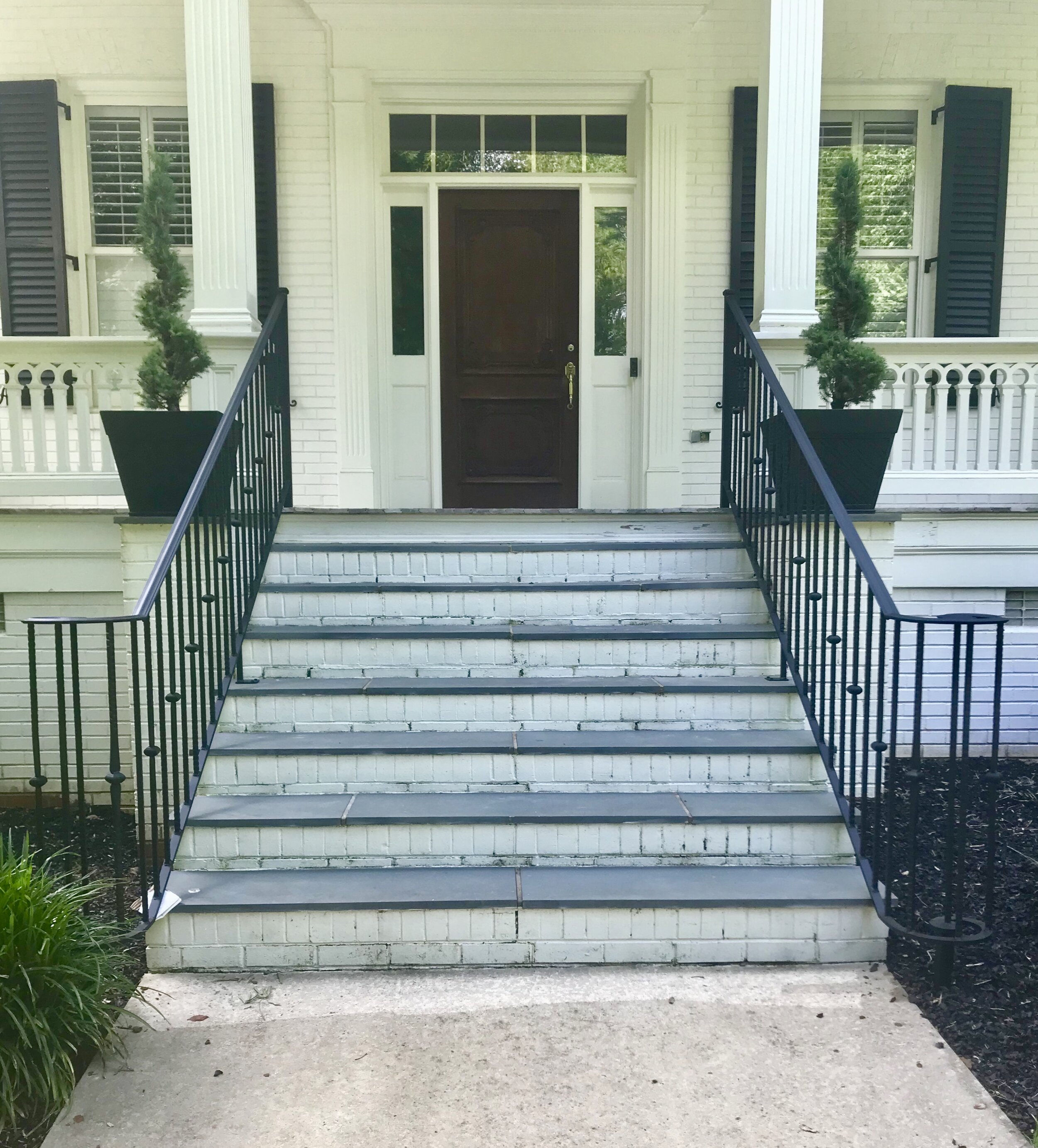Architects are Turning to Aluminum Handrails—But Not for the Reason You Think
Aluminum handrails are showing up everywhere lately, but it’s not just about looks. Sure, they offer a sleek, modern style that fits right into today’s architectural trends, but there’s more driving their popularity. Architects are turning to aluminum for practical reasons that go beyond aesthetics. This material is durable, resistant to rust, and requires almost no maintenance.
Unlike other metals, aluminum stands up to tough weather without corroding or fading, which makes it perfect for both indoor and outdoor use. Even better, it’s lightweight and easy to install, saving time and reducing labor costs.
More and more, architects are realizing that aluminum handrails check all the boxes for functionality while still delivering on design.
Why are architects increasingly choosing aluminum handrails over traditional materials?
Architects are increasingly choosing aluminum handrails over traditional materials like wood or steel due to several key advantages that enhance both functionality and design flexibility:
Durability and Corrosion Resistance: Aluminum is highly corrosion-resistant, making it ideal for indoor and outdoor applications, especially in areas with high humidity or coastal environments. Unlike steel, aluminum does not rust, which ensures longevity and reduces the need for maintenance over time.
Lightweight Yet Strong: Aluminum is significantly lighter than steel, making it easier to handle and install while offering sufficient strength and stability. This combination of lightness and strength allows for more versatile designs and simplifies construction.
Low Maintenance: Aluminum requires minimal upkeep compared to materials like wood, which may warp, splinter, or require frequent refinishing. Aluminum handrails retain their appearance for much longer without constant care, making them cost-effective in the long run.
Modern Aesthetic: Aluminum offers a sleek, clean, and modern look that complements contemporary architecture. Its ability to be easily molded and finished in various styles and colors allows architects to create visually appealing designs that complement modern spaces.
Eco-Friendly and Recyclable: Aluminum is highly recyclable, which aligns with sustainable building practices. Architects increasingly favor materials that contribute to green building standards, and aluminum’s recyclability makes it an environmentally friendly choice.
Architects are turning to aluminum handrails because they offer durability, low maintenance, aesthetic versatility, and environmental benefits, making them an attractive alternative to traditional materials.
What makes aluminum handrails a practical solution for modern building designs?
Aluminum handrails are a practical solution for modern building designs due to their durability, versatility, and aesthetic appeal. Here’s why they’re favored in contemporary architecture:
Durability and Longevity: Aluminum is resistant to corrosion, rust, and weathering, making it ideal for indoor and outdoor applications. Whether in coastal areas with salty air or environments with high humidity, aluminum handrails maintain their appearance and function over time without needing constant repairs or replacements.
Lightweight yet Strong: Although lightweight, aluminum is strong and sturdy enough to provide the necessary support and safety in handrails. This makes installation easier and more cost-effective without sacrificing the design's structural integrity.
Low Maintenance: Unlike wood, which requires regular painting or refinishing, aluminum handrails need minimal maintenance. They are easy to clean and retain their appearance for years, making them a low-maintenance option for busy commercial spaces or residential buildings.
Aesthetic Flexibility: Aluminum can be easily molded and finished in various styles, colors, and textures to suit modern building aesthetics. It can complement sleek, contemporary designs and combine with materials like glass or wood for a more dynamic and versatile look.
Sustainability: Aluminum is highly recyclable, making it an eco-friendly choice for modern buildings. Architects increasingly prioritize sustainable materials, and aluminum’s recyclability aligns with green building standards and environmentally conscious design practices.
Aluminum handrails offer a durable, low-maintenance, aesthetically flexible, and sustainable solution, making them a practical and attractive choice for modern building designs.
How do aluminum handrails align with current architectural trends?
Aluminum handrails align seamlessly with current architectural trends by offering a combination of modern aesthetics, durability, and versatility that complements contemporary design philosophies. Here’s how aluminum handrails are in sync with today’s architectural trends:
Sleek, Minimalist Aesthetic: Modern architecture often favors clean lines and minimalistic designs. Aluminum handrails perfectly fit this aesthetic with their sleek, smooth finish and simple structure. They provide a modern, understated look that enhances the overall design without overwhelming the space, making them ideal for open, airy interiors and contemporary exteriors.
Durability and Sustainability: Architects and designers increasingly prioritize sustainable materials that offer longevity. Aluminum is not only strong and resistant to corrosion, but it is also highly recyclable, aligning with the growing emphasis on eco-friendly building practices. This sustainability factor makes aluminum handrails a perfect match for green building certifications and environmentally conscious projects.
Customization and Versatility: Aluminum handrails can be easily customized in various shapes, sizes, and finishes to suit specific design needs. Whether used in commercial, residential, or public spaces, aluminum’s versatility allows architects to create unique, tailored designs, from industrial-style spaces to sleek, modern interiors. It can be paired with other materials like glass or wood to create dynamic and contemporary contrasts.
Low Maintenance and Long-Term Value: Modern buildings require durable and low-maintenance materials. Aluminum handrails are easy to clean, resist wear and tear, and require little upkeep. This aligns with the current trend of using long-lasting, efficient materials that reduce the need for frequent repairs, ensuring both aesthetic appeal and practicality.
Aluminum handrails align with current architectural trends by offering durability, a minimalist aesthetic, versatility, and sustainability—key qualities that resonate with modern design principles and help create functional and visually appealing spaces.
What unexpected factors influence the use of aluminum handrails in new construction?
Several unexpected factors influence the use of aluminum handrails in new construction beyond just their aesthetic and functional benefits:
Environmental Regulations: As sustainability becomes more important in the construction industry, the environmental impact of materials plays a critical role. Aluminum’s recyclability and lower carbon footprint than other metals or materials have made it a popular choice for eco-conscious architects and builders.
Cost-Effectiveness Over Time: While aluminum can have a higher upfront cost compared to some materials, its durability and low maintenance requirements make it a cost-effective solution in the long term. Aluminum doesn’t require painting or frequent repairs, reducing long-term maintenance costs.
Weather Conditions: In areas with harsh weather conditions—such as coastal regions with salty air—aluminum’s resistance to corrosion and rust becomes a decisive factor. Its ability to withstand the elements without deteriorating ensures that aluminum handrails are practical and long-lasting.
Technological Advancements: Advances in aluminum production, such as improved strength-to-weight ratios and finishes, have expanded its use in construction. Modern aluminum alloys are more resilient and adaptable, making them a more viable choice for various design applications.
Environmental regulations, long-term cost benefits, weather resistance, and technological advancements influence the growing use of aluminum handrails in new construction projects.
Let’s Build Smarter with Aluminum Handrails from Master Fabrication
Aluminum handrails aren’t just winning on looks—they’re proving themselves where it really matters. Their durability, low maintenance, and easy installation make them a smart, no-fuss choice for modern projects.
More architects are catching on, not just for the sleek style, but for the long-term value and reliability aluminum brings to the table. When performance and design come together this smoothly, it’s easy to see why aluminum handrails are becoming the preferred option.
At Master Fabrication, we know what it takes to blend style with strength. Our aluminum handrails are designed to meet your project’s needs without sacrificing looks or durability. If you're ready to make a smart choice that lasts, we’re here to help every step of the way. Reach out to us today and let’s create something built to perform and impress.

